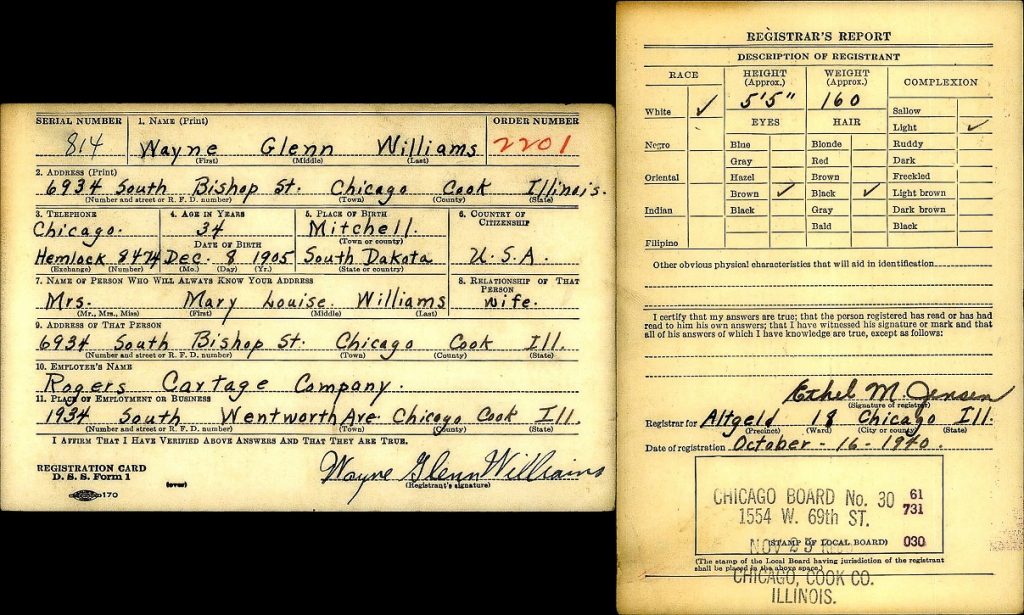A significant number of World War II US draft registration cards from what is referred to as the “young men’s draft” have been published on FamilySearch. A list of the currently available states has been published on our Genealogy Search Tip of the Day and a few quick tips to using these cards has been posted on Genealogy Tip of the Day.
The cards are a wonderful resource for individuals born in the very late 19th and early 20th centuries. The cards can confirm employment (as the one does in the illustration), may mention other relatives and their addresses, and provide a physical description. 
Using the addresses given on the registrations, it may be possible to confirm relationships between individuals with the same last name. For some registrants the cards may provide evidence of WPA employment which would lead to additional records.
These records are one of the few post-1940 federal records available that cover a significant proportion of the population. There sometimes are notations on the card if the individual had active military service during the war. Not all registrants who served during World War II have notations regarding their service on their card–none of my three great uncles who served have any notation to their service on their cards.
The front and back of the card will appear as one image in the digital files. They are supposed to be in alphabetical order, but it is always possible that a card or two is filed incorrectly. Always look at the image after the one of interest is located as sometimes there is additional information after the actual card. I’ve seen change of address information and “proof of birth” information filed after the card. Not always–but occasionally, so it’s worth a look.

3 Responses
Thanks for posting this. I’ve been able to find the cards for both of my grandfathers in Virginia. The Virginia cards are organized in groups, and each group is in alphabetical order. I haven’t been able to figure out the groups yet – don’t know if it’s by date, location, etc. Thankfully, FamilySearch has provided the beginning and ending surname for each group.
It can take a little figuring out in some cases–but they are usually in some sort of order. I’ve made notes of things I’ve noticed for Illinois when searching for my individuals in the set of records.
The physical descriptions are interesting—but can be misleading. I noticed in earlier records that one of my ancestors was relatively short, not surprising since ‘short’ seems to run in my family. But when showing my dad’s record to my mom earlier this week, she noticed it listed him as 5’6″. She pointed out that he was much taller than that, just a hair under 6′. We looked to see that the card was filled out on his 18th birthday, presumably when he was still growing!